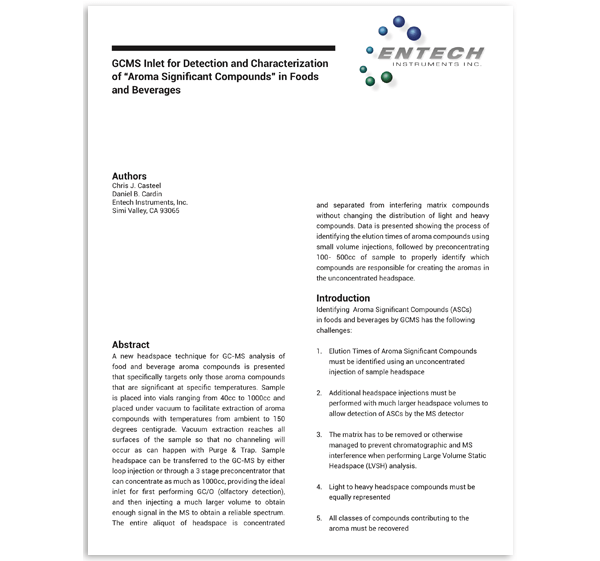GCMS Inlet for Detection and Characterization of “Aroma Significant Compounds” in Foods and Beverages
A new headspace technique for GC-MS analysis of food and beverage aroma compounds is presented that specifically targets only those aroma compounds that are significant at specific temperatures. The sample is placed into vials ranging from 40cc to 1000cc and placed under vacuum to facilitate extraction of aroma compounds with temperatures from ambient to 150 degrees centigrade. Vacuum extraction reaches all surfaces of the sample so that no channeling will occur as can happen with Purge & Trap. Sample headspace can be transferred to the GC-MS by either loop injection or through a 3 stage preconcentrator that can concentrate as much as 1000cc, providing the ideal inlet for first performing GC/O (olfactory detection), and then injecting a much larger volume to obtain enough signal in the MS to obtain a reliable spectrum. The entire aliquot of headspace is concentrated and separated from interfering matrix compounds without changing the distribution of light and heavy compounds. Data is presented showing the process of identifying the elution times of aroma compounds using small volume injections, followed by preconcentrating 100- 500cc of the sample to properly identify which compounds are responsible for creating the aromas in the unconcentrated headspace.
Attached Files
| File | Action |
|---|---|
| Aroma Significant Comps Food Flavor | Download |

- Version
- Download 1983
- File Size 125.06 KB
- File Count 1
- Create Date July 12, 2017
- Last Updated February 20, 2023
